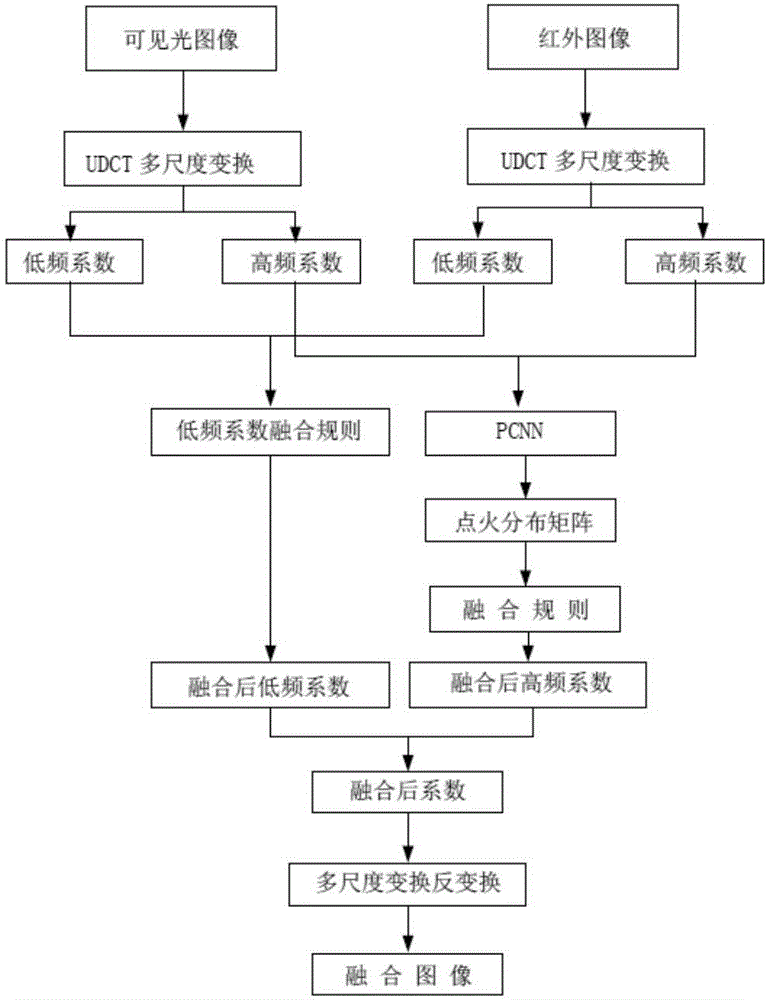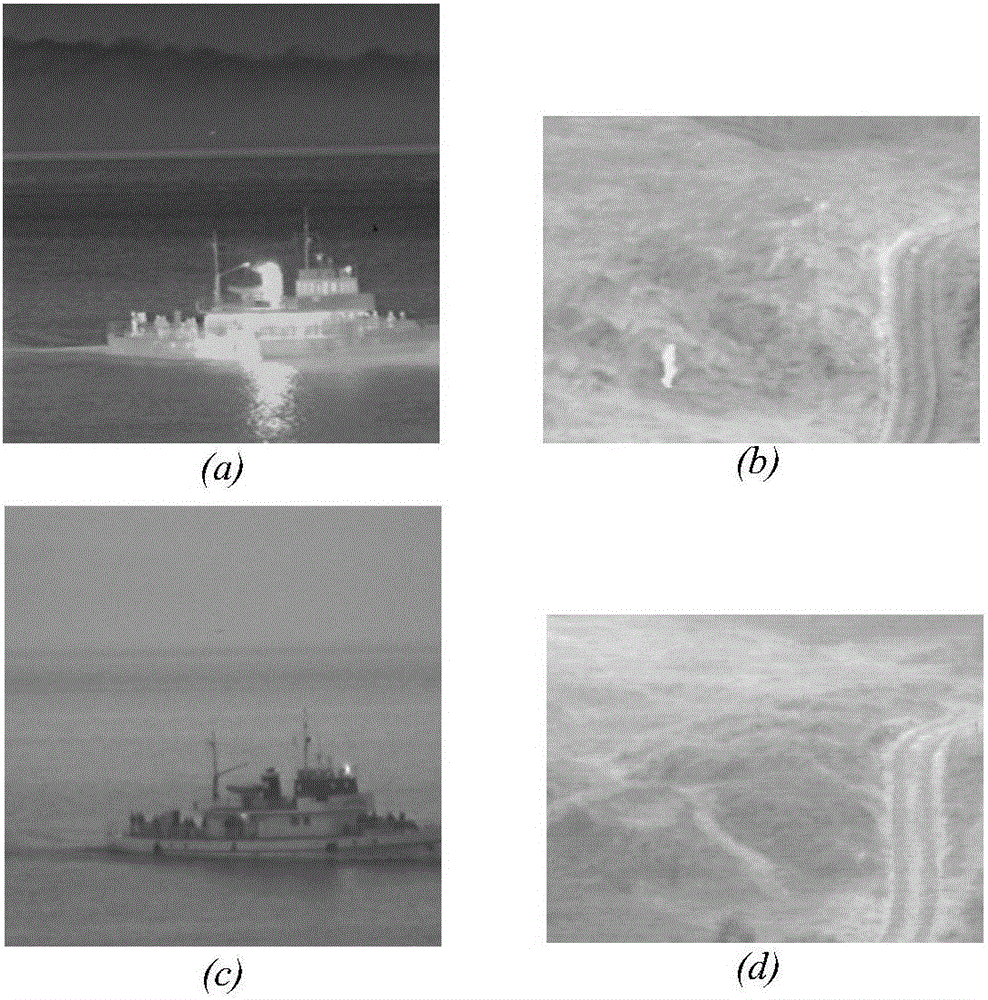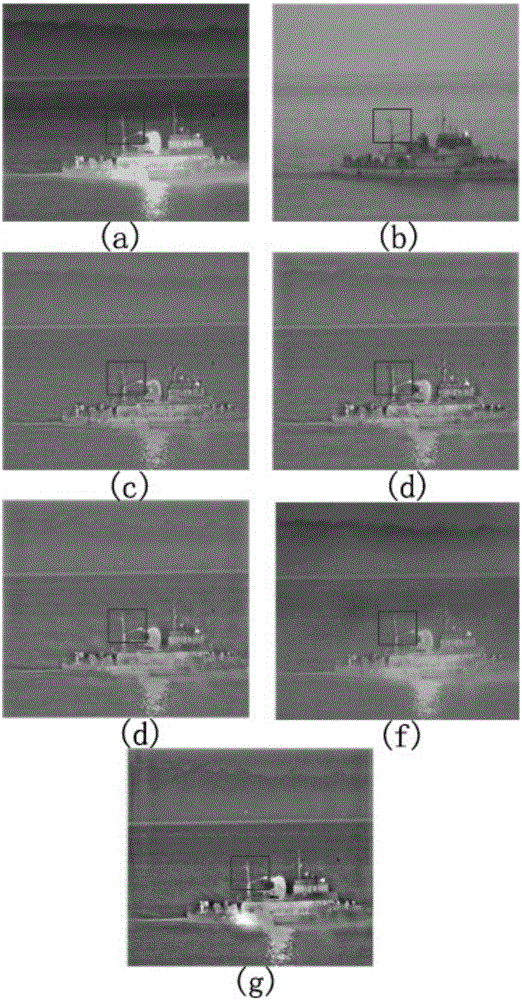Visible light and infrared image fusion algorithm based on UDCT (Uniform Discrete Curvelet Transform) and PCNN (Pulse Coupled Neural Network)
An infrared image and fusion algorithm technology, applied in the field of image processing, can solve the problems of inconspicuous details, inability to judge the image to be fused, unclear fusion image, etc.
- Summary
- Abstract
- Description
- Claims
- Application Information
AI Technical Summary
Problems solved by technology
Method used
Image
Examples
Embodiment 1
[0045] In view of the excellent performance of UDCT transformation, this paper applies it to the fusion method of infrared and visible light images. This algorithm can be summarized as the following three steps:
[0046](1) After decomposing the source images of the visible light image and the infrared image through UDCT transformation, the UDCT subband coefficients of different scales and directions can be obtained. It contains low frequency and high frequency UDCT coefficients.
[0047] (2) Use different methods to fuse each scale layer according to specific rules, that is, use low-frequency coefficient fusion rules for low-frequency coefficients, and use high-frequency coefficient fusion rules to process high-frequency coefficients, and finally obtain the fused UDCT of each layer coefficient.
[0048] (3) The reconstructed image obtained by inverse transforming the fused UDCT coefficients of each layer is the fused image.
[0049] Fusion rules adopted by the algorithm
...
Embodiment 2
[0090] In order to verify the effectiveness of the algorithm, the experiment uses two sets of registered infrared and visible light images of the same scene. Experimental images such as figure 2 shown. The method proposed by the present invention is compared with the method based on wavelet transform, the method based on non-subsampling wavelet transform, the method based on Contourlet transform, the method based on UDCT transform and the method based on generalized random walk. In the experiment, both wavelet transform and non-subsampling wavelet transform use 3-layer decomposition, and use Harr wavelet basis function, use the maximum coefficient rule to fuse high-frequency coefficients, and use the average rule to fuse low-frequency coefficients.
[0091] Applying different fusion methods to the figure 2 The experimental results of the Chinese ship image are as follows: image 3 shown. image 3 (a) and image 3 (b) Infrared image and visible light image of the ship, r...
PUM
 Login to View More
Login to View More Abstract
Description
Claims
Application Information
 Login to View More
Login to View More - R&D
- Intellectual Property
- Life Sciences
- Materials
- Tech Scout
- Unparalleled Data Quality
- Higher Quality Content
- 60% Fewer Hallucinations
Browse by: Latest US Patents, China's latest patents, Technical Efficacy Thesaurus, Application Domain, Technology Topic, Popular Technical Reports.
© 2025 PatSnap. All rights reserved.Legal|Privacy policy|Modern Slavery Act Transparency Statement|Sitemap|About US| Contact US: help@patsnap.com



